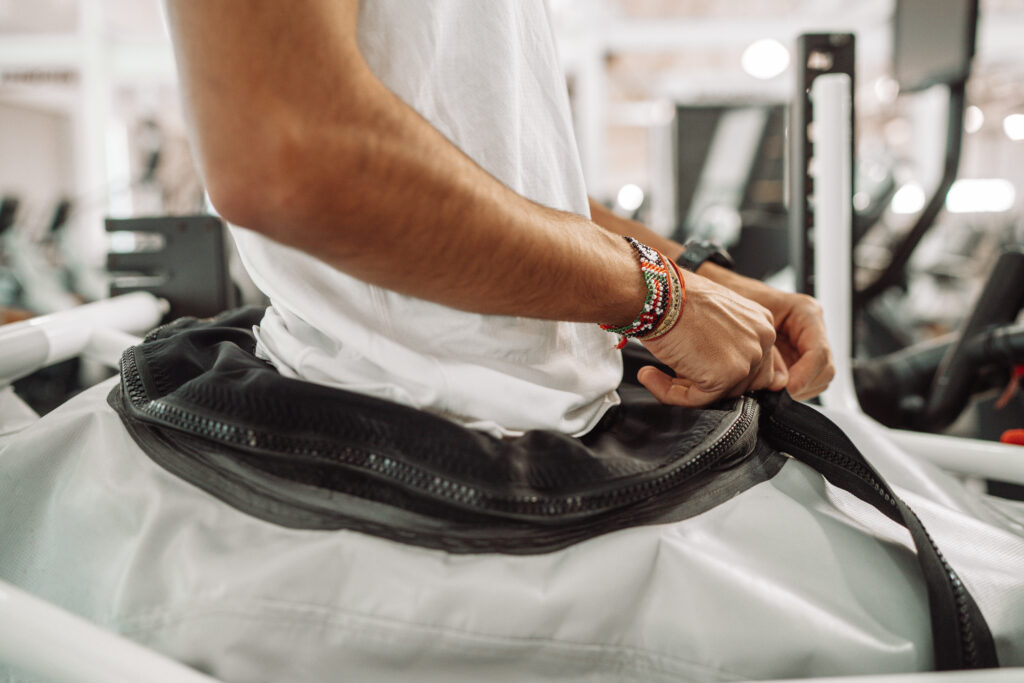
Microgravity treadmills allow you to walk, jog or run in a virtually weightless environment. But how do they work? What is the science behind the technology? We’re answering all that and more as we dive into the origins of air pressure technology and how it evolved to create the Boost Microgravity Treadmill™.
Origins at NASA

Boost microgravity treadmills are equipped with a unique air pressure technology that creates an environment where the user has the ability to change the effect of gravity they are experiencing. This stems from a concept sometimes called Differential Air Pressure (DAP) technology originally developed by our founder’s father, Dr. Robert Whalen. Working at NASA in the 1990’s to help astronauts maintain their bone density, muscular strength, and cardiovascular fitness while in space, Dr. Whalen hypothesized that “musculoskeletal maintenance in space requires Earth-equivalent functional loading (or weighting).” [1] This functional loading essentially involves loading the body with a force similar to that which you would experience on Earth. In space, lack of gravity causes astronauts to lose bone density and muscle mass. To combat this loss of bone density and muscle mass, they would typically use a harness system attached to a treadmill to add weight in order to walk. However, Dr. Whalen proposed that differential air pressure could have the same effect by applying a force equal to the astronaut’s body weight as a more comfortable and effective alternative to the harness. As time went on and his research progressed, Dr. Whalen saw the potential for this technology to not only create additional gravity for astronauts in space but also reduce the effect of gravity for users on earth.
The creation of microgravity treadmills
This concept of DAP in space was brought down to Earth with the goal of creating the opposite effect – to allow people to experience less gravity and thus reduce stress on bones and joints. Essentially, Dr. Whalen designed a treadmill with an air chamber (bag or enclosure) that surrounds the lower half of the body. The enclosure is then pressurized to be greater than the pressure outside of the chamber, which creates a lifting force that counteracts the force of gravity. Increasing or decreasing that pressure then changes the amount of lift on the user, resulting in the ability to control the amount of impact the user feels. This allows the user to walk, jog, or run in an almost weightless environment, hence the term microgravity, or zero gravity. This can be beneficial for individuals who have sustained injuries or had surgery, those with chronic conditions or physical limitations that make it difficult to exercise in a normal environment, and even athletes looking to enhance performance and recovery.
What are the benefits of a zero gravity treadmill?
For athletes, zero gravity treadmills can help to reduce the impact on joints and muscles during training, which can lead to faster recovery times and reduced risk of injury. It can also help to improve running form and increase speed and power.
For patients undergoing physical therapy, zero gravity treadmills can provide a safe and controlled environment to improve range of motion and build strength. They can also help to reduce pain and improve balance.
For a more in-depth look at the benefits of zero gravity treadmills, check out our blog “Defying Gravity: 4 Key Benefits of Microgravity Treadmills”.
As we continue to stay on the cutting-edge of air pressure technology with ongoing research and advancements, we will continue to see even more applications for the unique and beneficial science of microgravity treadmills in the future.
